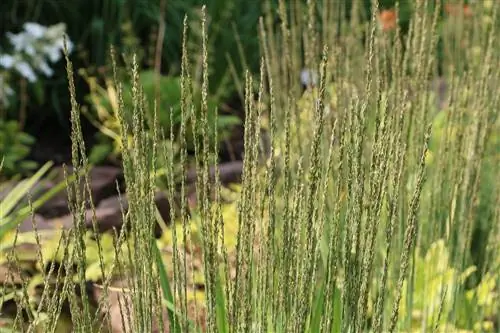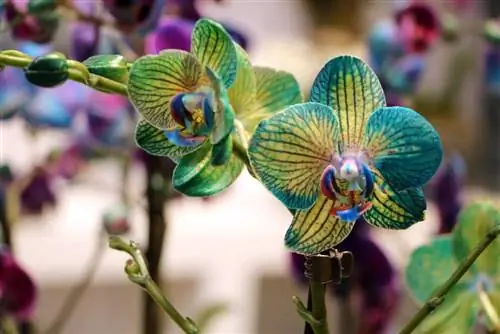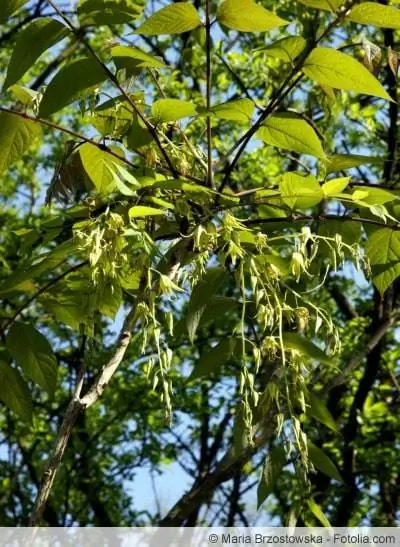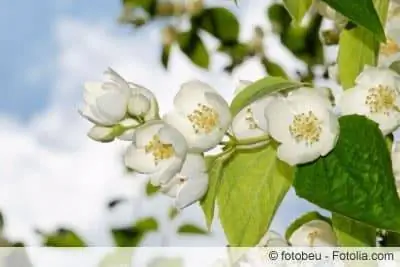- Author admin [email protected].
- Public 2023-12-17 03:39.
- Last modified 2025-01-24 12:45.
The growth height of blue pipe grass is usually 50 to 100 cm. The flower spikes in which the seeds are hidden are also 5 to 50 cm long. The flower spikes also have a blue-violet color. The pipe grass can enchant the garden with a wonderful display of flowers between the months of July and September. It could also be described as a reed-like plant that gardeners like to plant around the pond.
Sowing and propagation of blue pipe grass
The Molinia caerula grass plant occurs in almost all areas. If you pass an open natural area, you will recognize this type of grass from afar. This means that it is actually no longer necessary to purchase the seeds for the grass in a store:
- Simply pull the seeds from the Molinia caerula and let them germinate.
- All you need to do is press the seed lightly against the soil in a pot full of soil.
- The first seedling should be visible within two weeks.
- If the thermometer falls below 15°C, the seed cannot germinate! The temperature should therefore be a constant 20 °C.
- As soon as the seedling has grown 10 cm, you can put it in the garden.
- You can of course also start sowing in the garden immediately and mark the ground with some sand.
- If you want to further propagate the grass, you can now take seeds from your own flowers and grow them again.
Planting and caring for pipe grass
Once the pipe grass has grown, it is easy to manage. It is almost undemanding and can survive for several days without water. However, it shouldn't get too dry, otherwise it has no chance of survival.
The Molinia caerula requires little care. The plant itself is completely undemanding and only requires moderate water. In winter, the grass can be left outdoors and delight the owner's eyes with its wonderful color. As a location, it is advantageous if you choose a sunny or semi-shady place. The blue pipe grass likes to grow at the edge of the pond or between trees. In order for the plants to grow extensively, soil rich in humus is required. The Molinia caerula should be cut in spring so that it can grow colorfully again throughout the summer.
Location
Choose a sunny or partially shaded spot for the Molinia caerula. The soil quality should be neutral to acidic, well-drained and moist. The grass also survives a dry period undamaged. So you can go on vacation with peace of mind and return home knowing that you will still find grass in its full size and he alth in its place.
Pouring
In summer, Molinia caerula needs a little more water. However, two to three times a week are completely sufficient.
Fertilize
In winter, Molinia caerula does not need any fertilizer. In summer it is enough to add a shot of fertilizer to the irrigation water once every two months.
Cutting
In order for the blue pipe grass to grow year after year, it should be cut close to the ground every spring. You can then dry the grass and place it in a vase as a dry bouquet.
Wintering
No special measures are necessary for wintering. Protect the ground from frost by sprinkling wood chips or pellets between the grass blades.
Diseases and pests
The blue pipe grass is not attacked by any pests, so no problems arise here either. Diseases are also unknown.
Special features of the pipe grass
This grass is a protected species that occurs naturally, especially in moorland areas. Plants of this genus can also be found in Europe and Western Asia. If you want to create a bog bed, the blue moor grass is perfect for it. It can also be cultivated well in a pot. The leaves and flowers are easy to cut and dry. Due to the optimal properties of the plant, it is suitable for beginner gardeners. Heath gardens or wild gardens become an admirable area with the grass.
Known Varieties of Blue Pipe Grass
There are many varieties that fall under the name “Blue Pipe Grass”:
- Heather is also a blue pipe grass and reaches an astonishing height of 150 cm when it flowers.
- Moorflame also belongs to the blue grass family. This develops a wonderful violet-red and autumnal color, which creates a fantastic color picture.
- The Moor Witch can be seen in autumn with a golden yellow color. It also has purple ears and a height of around 80 cm. Transparent is the name of a type of blue pipe grass and fascinates with its graceful growth and a height of approx. 50 cm.
- The wind chime plant grows almost upright to a height of 180 cm and also fascinates with its great coloring.
What you need to know about blue pipe grass in brief
The blue pipe grass has a natural origin and is one of the protected types of grass. It is easy to care for and is rarely attacked by pests. It does not require any special care and is therefore ideal for the wild or heath garden. Additionally, the Molinia caerula grass plant can be sown near ponds to create a natural wind barrier. Because even strong winds cannot harm the blue pipe grass.
- Species/family: a perennial that belongs to the sweet grass family (Poaceae)
- Care effort: low, easy to care for, undemanding and robust
- Flowers: sit in loose panicles on upright flower stalks, which in turn protrude like rays from the leaves
- Flowering period: July to October with dark purple to light brown spikes, golden yellow autumn color
- Foliage: narrow linear green leaves with striking golden-yellow autumn colors, also an ornament in winter
- Growth: bushy, upright, forming dense clumps
- Height: depending on the variety, tuft of leaves 20 to 60 cm, with inflorescences 50 to 200 cm
- Location: sunny to partially shaded, preferably in front of and between trees and at the edge of the pond
- Substrate: humus, moist, but permeable, neutral to acidic
- Planting time: at any time as long as the ground is not frozen, you can also sow in spring
- Cut: Spring close to the ground
- Partner: fits nicely into a carpet of upholstery grasses such as blue fescue, where it creates contrasts, also nice partner for autumn asters
- Propagation: division in spring
- Care: water during prolonged drought, combined with pruning and fertilize in spring
- Wintering: hardy
- Special features: occurs naturally in the moorland areas of Europe and Western Asia
- Use: both leaves and inflorescences can be easily cut and dried






